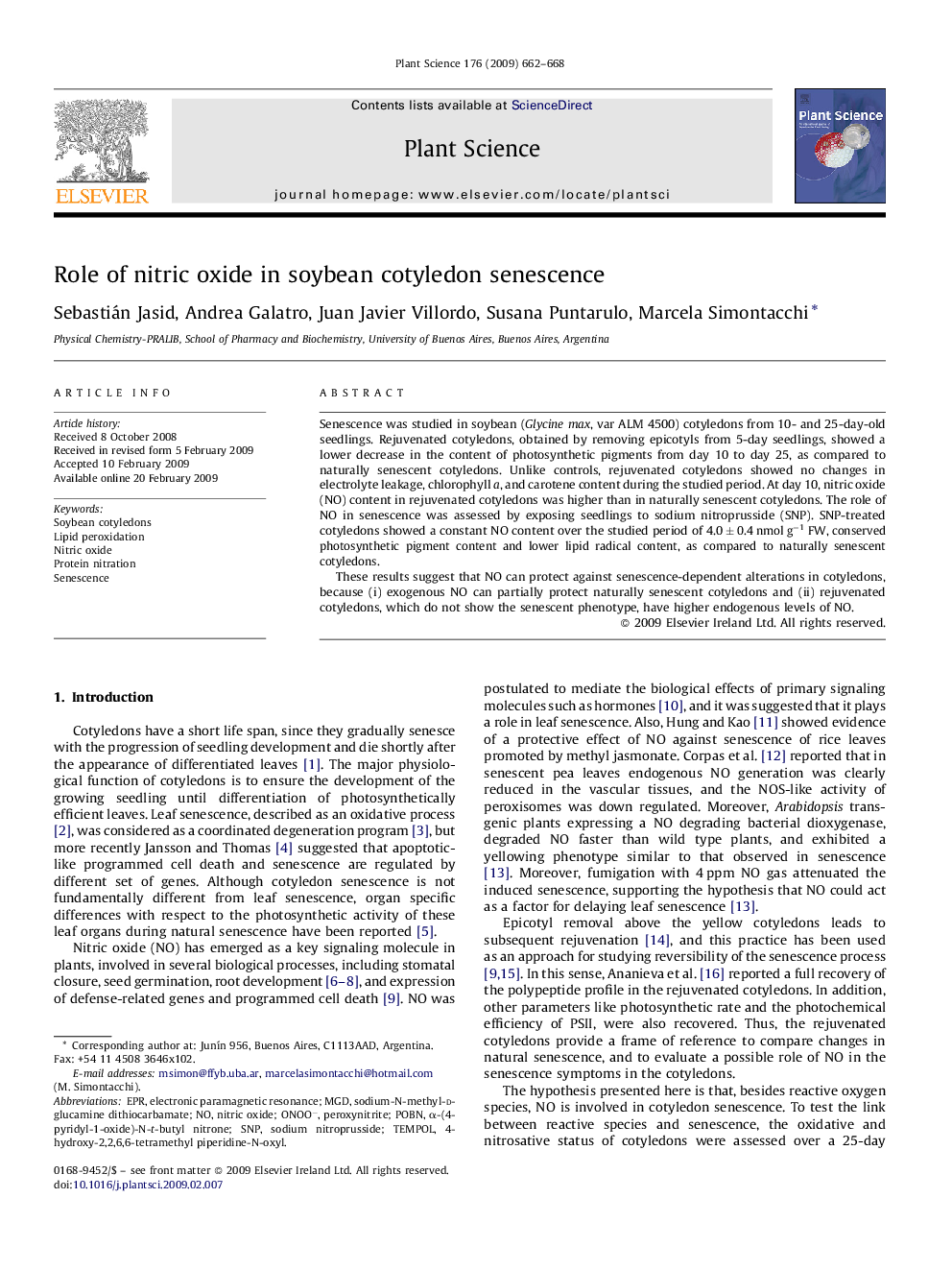| Article ID | Journal | Published Year | Pages | File Type |
|---|---|---|---|---|
| 2017669 | Plant Science | 2009 | 7 Pages |
Senescence was studied in soybean (Glycine max, var ALM 4500) cotyledons from 10- and 25-day-old seedlings. Rejuvenated cotyledons, obtained by removing epicotyls from 5-day seedlings, showed a lower decrease in the content of photosynthetic pigments from day 10 to day 25, as compared to naturally senescent cotyledons. Unlike controls, rejuvenated cotyledons showed no changes in electrolyte leakage, chlorophyll a, and carotene content during the studied period. At day 10, nitric oxide (NO) content in rejuvenated cotyledons was higher than in naturally senescent cotyledons. The role of NO in senescence was assessed by exposing seedlings to sodium nitroprusside (SNP). SNP-treated cotyledons showed a constant NO content over the studied period of 4.0 ± 0.4 nmol g−1 FW, conserved photosynthetic pigment content and lower lipid radical content, as compared to naturally senescent cotyledons.These results suggest that NO can protect against senescence-dependent alterations in cotyledons, because (i) exogenous NO can partially protect naturally senescent cotyledons and (ii) rejuvenated cotyledons, which do not show the senescent phenotype, have higher endogenous levels of NO.
